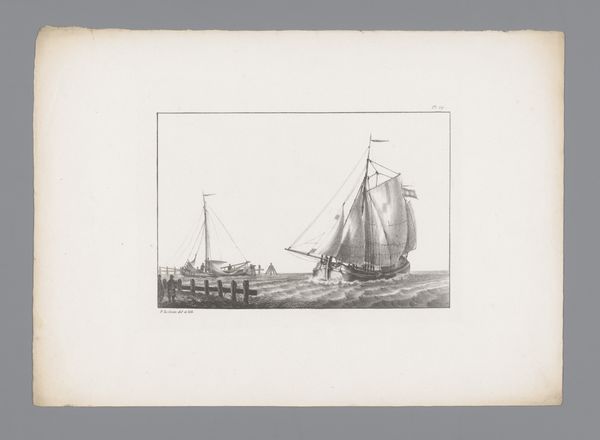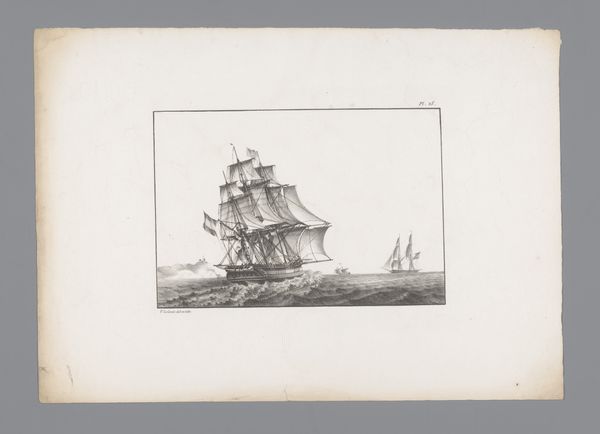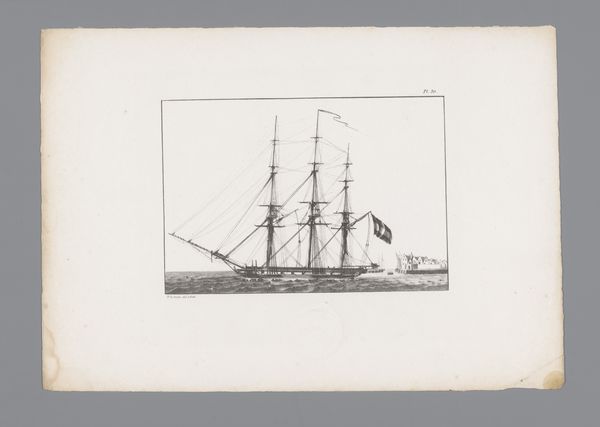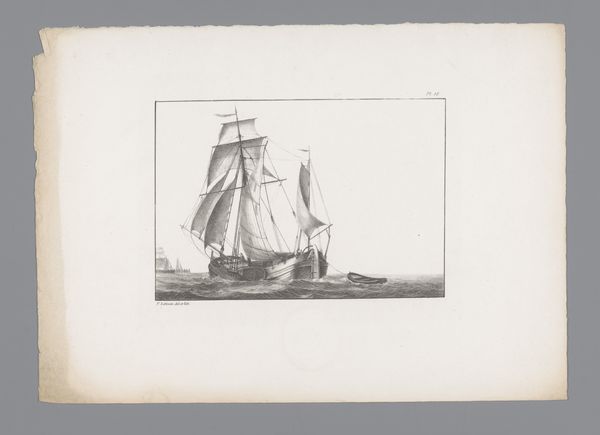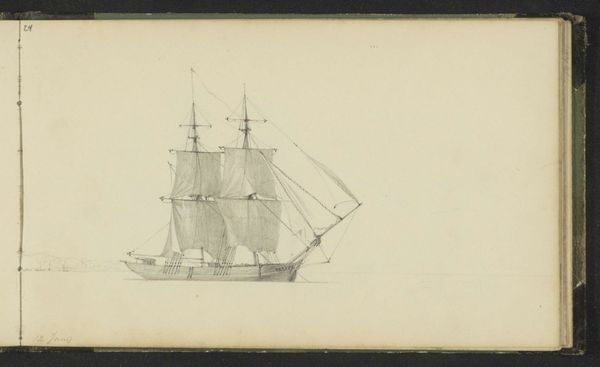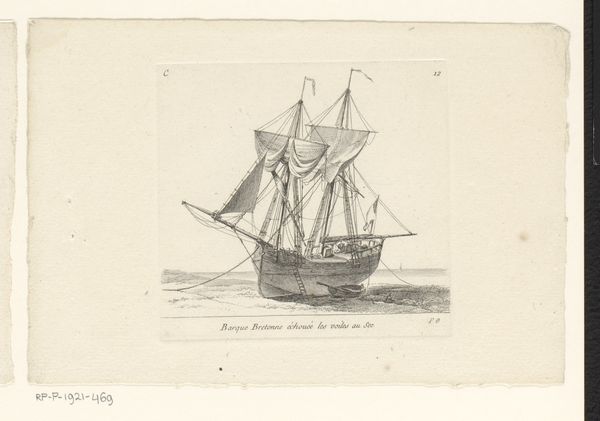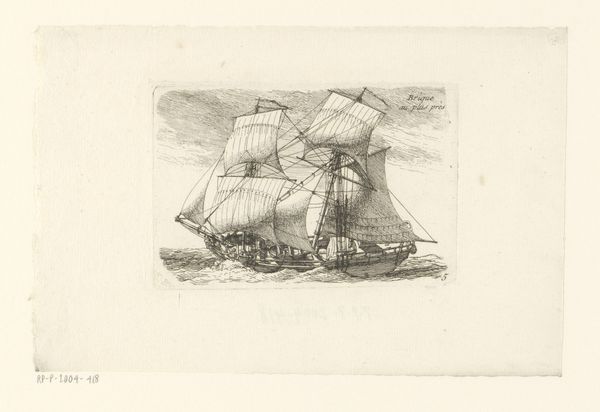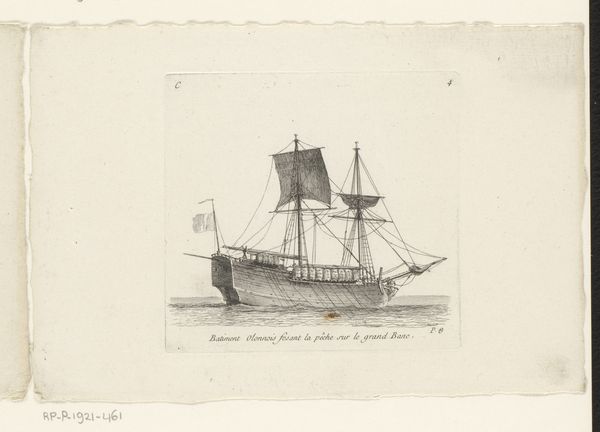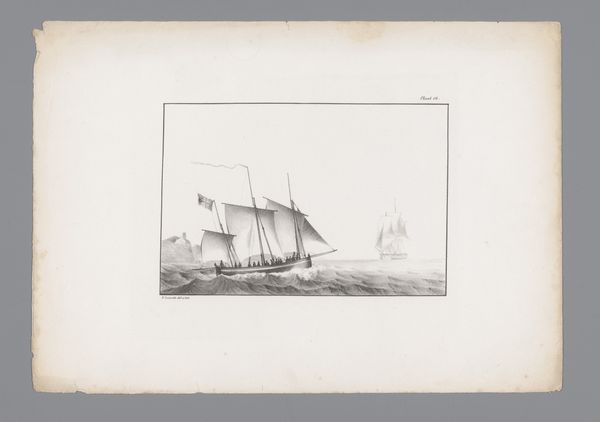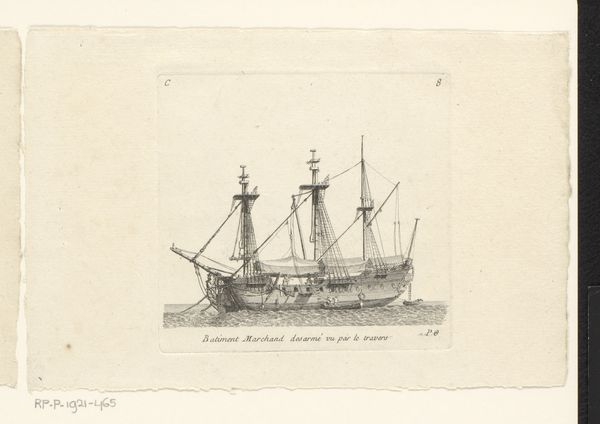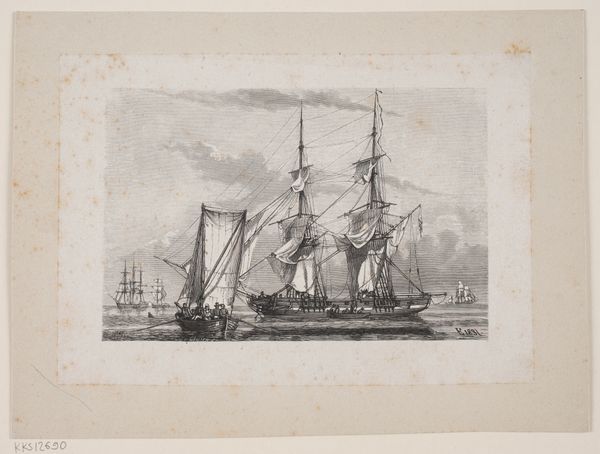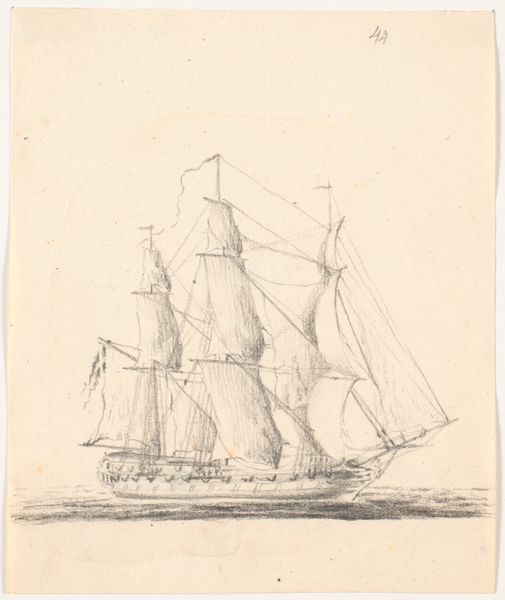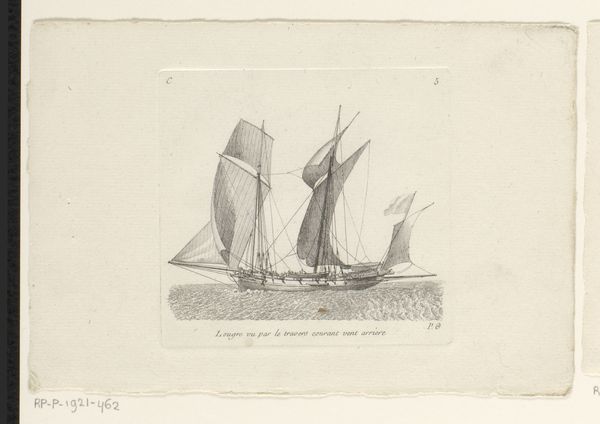
drawing, paper, ink
#
drawing
#
landscape
#
paper
#
ink
#
romanticism
#
line
#
realism
Dimensions: height 245 mm, width 350 mm
Copyright: Rijks Museum: Open Domain
Curator: The meticulous ink drawing, titled "Korvet," was completed by Pieter le Comte in 1831. It resides here at the Rijksmuseum. Editor: There's a haunting quietness to this drawing, almost melancholic. The detail in the ship contrasts so starkly with the emptiness of the water and sky. It evokes a sense of isolation and perhaps the precariousness of naval life. Curator: I find your reading fascinating, because in the 19th century Netherlands, naval power was intrinsically linked to global trade, and therefore, the slave trade. These ships played a pivotal role. Considering that legacy, does the artwork perhaps signal both national pride and an often-overlooked brutality? Editor: Exactly. Understanding the historical context, this image morphs. The neat lines and almost celebratory depiction of the ship begin to feel unsettling, considering the role of these vessels in furthering oppressive systems. What kind of policies and institutional frameworks enabled the creation of this work and supported artists like le Comte? Curator: The patronage would have likely come from wealthy merchants and naval officers—those directly benefiting from colonial expansion. This drawing becomes a document, then, reflecting a very specific, biased perspective. How would audiences have perceived the ship in relation to their own society, economics, and personal experiences? Editor: A celebration of Dutch power, certainly, a demonstration of technological advancement. Yet for those impacted by Dutch colonial ambitions, the ship probably represented an instrument of subjugation and oppression, a constant reminder of their dispossession. Even the style leans into this duplicity - at first glance the lines present a pleasing portrait of the sea and a ship. A more in-depth view suggests it could symbolize conflict, wealth extraction, and subjugation of native populations. Curator: Context reveals so much, doesn’t it? Initially, it seems like a simple drawing of a ship. But, when viewed through the lens of social and economic history, it presents us with the stark realities of its time. Editor: Agreed. This is why challenging traditional narratives is crucial. Artwork should encourage self-reflection and incite important discourse. It's never "just a drawing."
Comments
No comments
Be the first to comment and join the conversation on the ultimate creative platform.
